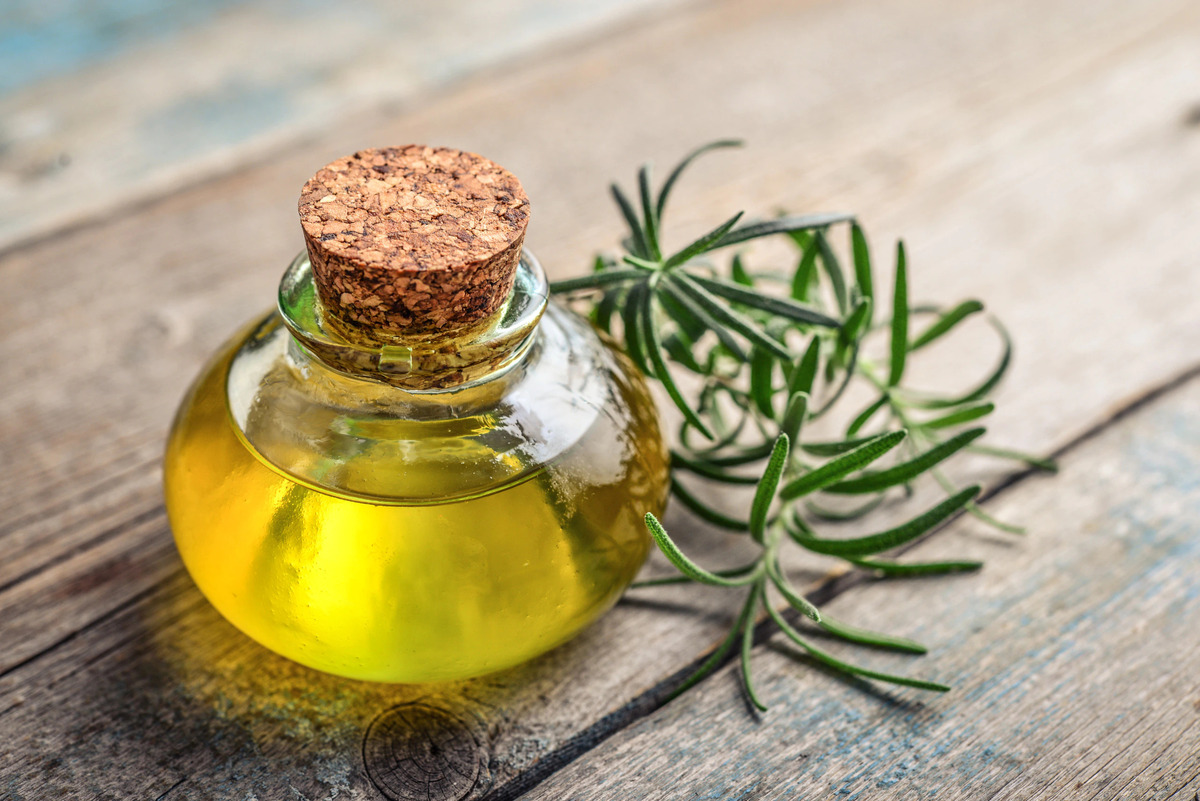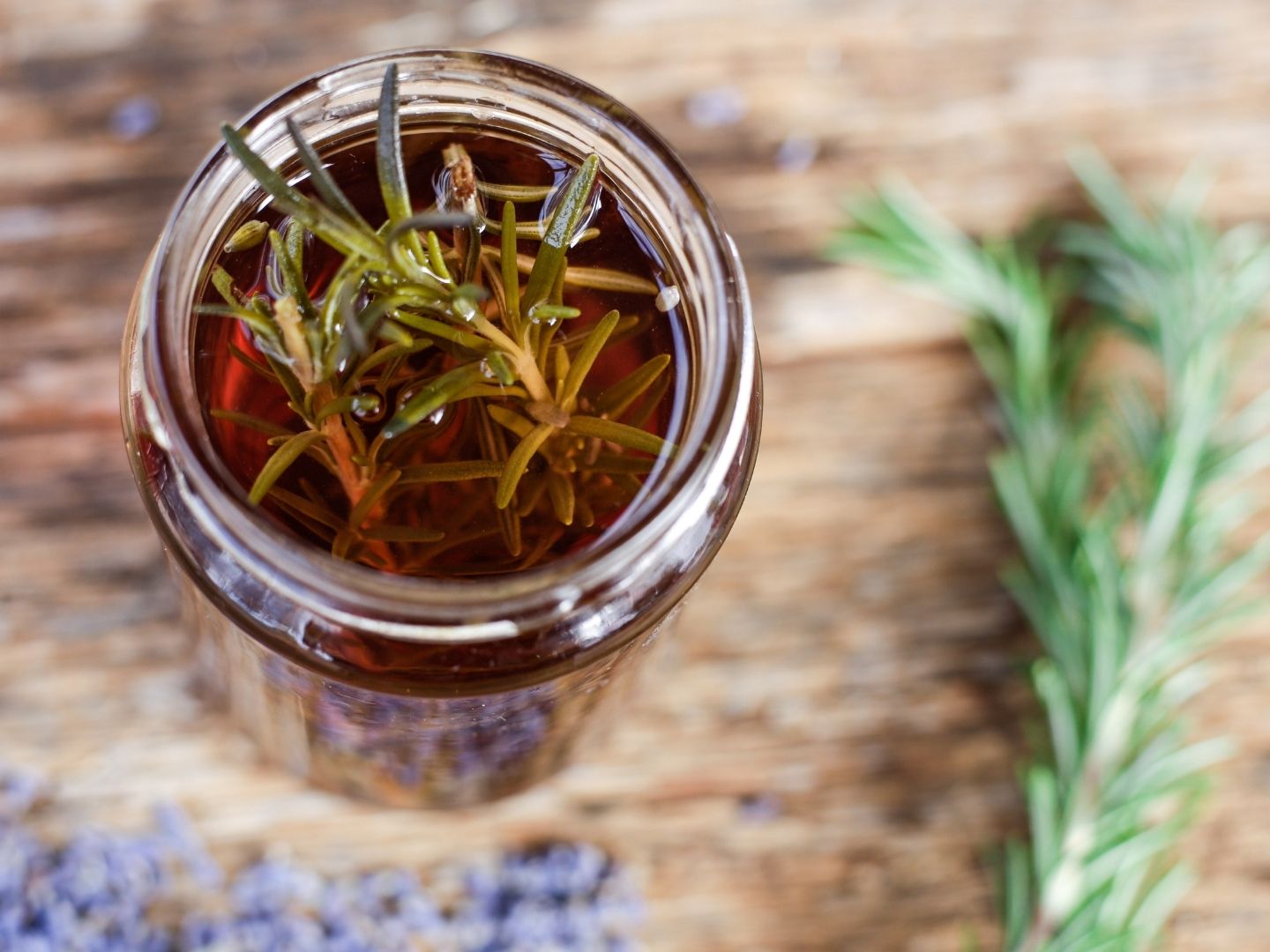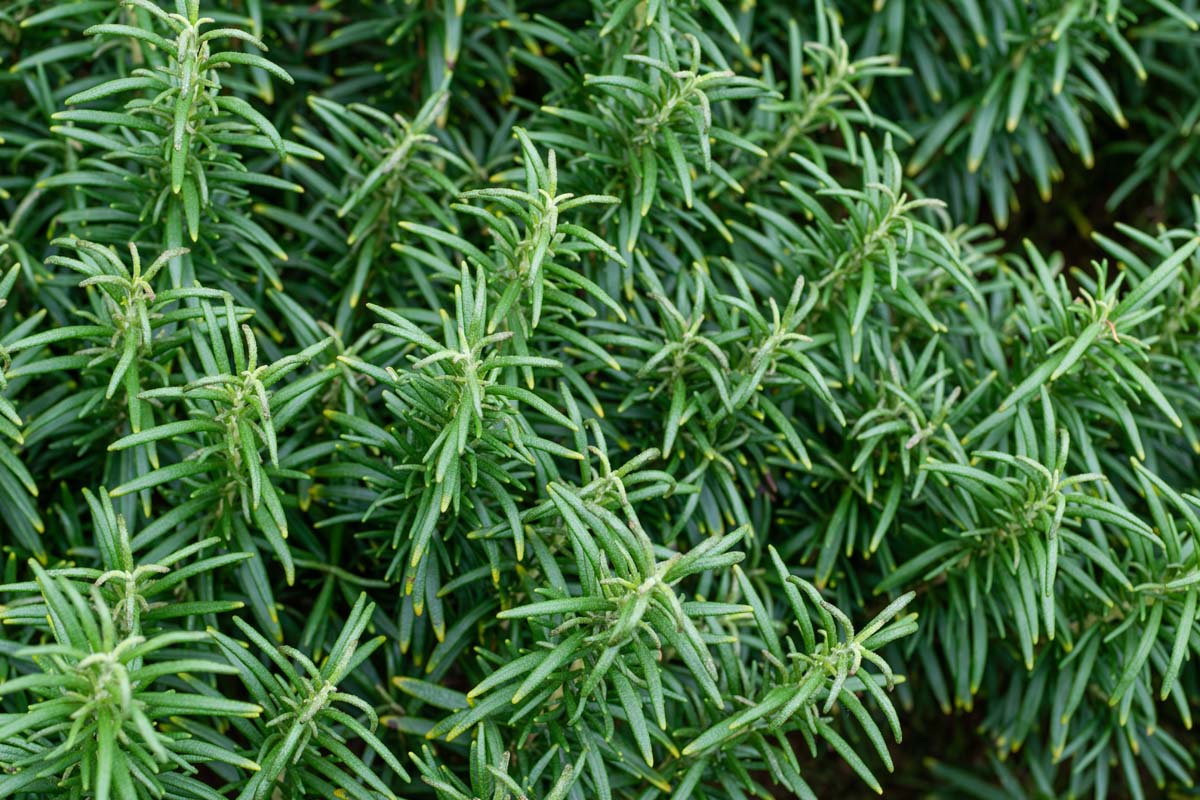Home>Gardening News and Trends>Latest News>What Does Rosemary Symbolize


Latest News
What Does Rosemary Symbolize
Published: January 31, 2024
Discover the intriguing symbolism behind rosemary and its significance in various cultures around the world. Stay updated with the latest news on this aromatic herb.
(Many of the links in this article redirect to a specific reviewed product. Your purchase of these products through affiliate links helps to generate commission for Chicagolandgardening.com, at no extra cost. Learn more)
Table of Contents
Introduction
Rosemary, with its unique aroma and versatility, has been cherished throughout history for its various uses and symbolic meanings. This beloved evergreen herb, scientifically known as Rosmarinus officinalis, holds a special place in different cultures, religions, and traditions.
Derived from the Latin words “ros” meaning dew and “marinus” meaning sea, rosemary is often associated with its fragrant leaves resembling the dewdrops of the sea. Native to the Mediterranean region, this aromatic plant has been cultivated and treasured for centuries for its captivating scent, culinary benefits, and medicinal properties.
As an herb deeply rooted in history, rosemary has not only served practical purposes but has also held symbolic significance. Its presence can be traced back to ancient times, where it was associated with memory, remembrance, and protection.
This article explores the historical significance, religious and spiritual symbolism, cultural representations, medicinal properties, culinary uses, and artistic references of rosemary. Join us on this journey as we uncover the fascinating world and multiple layers of symbolism surrounding this remarkable herb.
Historical Significance of Rosemary
The history of rosemary stretches back thousands of years, with its presence documented in various civilizations and cultures. This herb holds a rich historical significance, often associated with love, remembrance, and protection.
Ancient Egyptians revered rosemary for its medicinal properties and used it in their rituals and embalming processes. In Greek mythology, it was believed that the goddess Aphrodite, the goddess of love and beauty, rose from the sea and was draped with rosemary. This association with love and beauty continued in ancient Greece, where newlywed couples would wear garlands of rosemary during their wedding ceremonies, symbolizing love, fidelity, and the promise of a happy marriage.
Rosemary was also highly valued in ancient Rome, where it was believed to stimulate memory and enhance mental acuity. Students would wear rosemary garlands to improve their concentration during exams, and soldiers would take sprigs of rosemary into battle as a symbol of protection and courage.
During the Middle Ages, rosemary continued to hold significance. It was often used in herbal remedies and potions, believed to ward off evil spirits and protect against the plague. Brides would carry sprigs of rosemary in their bouquets as a symbol of loyalty and love, while mourners would throw rosemary into graves to ensure the departed’s peaceful rest.
The historical significance of rosemary extends to the Renaissance period, where it became a symbol of loyalty and friendship. Queen Elizabeth I of England was known to favor rosemary and promoted its cultivation throughout her reign.
Today, rosemary’s historical significance continues to be celebrated and cherished. It serves as a reminder of the timeless traditions and symbols that have been passed down through generations.
Religious and Spiritual Symbolism of Rosemary
Rosemary has deep religious and spiritual symbolism in various cultures and faiths. Its fragrant and evergreen nature has been associated with divine presence, purification, and protection.
In Christianity, rosemary is often linked to the Virgin Mary. Legend has it that during the flight to Egypt, as Mary and Baby Jesus took shelter under a rosemary bush, the white flowers of the plant turned blue in her honor. This story led to the belief that rosemary is a blessed herb and a symbol of Mary’s purity and grace.
Throughout history, rosemary has also been associated with remembrance and the afterlife. In some Christian funerals, mourners would carry sprigs of rosemary as a way of remembering the departed and longing for their souls to rest in peace. Additionally, it has been used in purification rituals and blessings, symbolizing the cleansing and protection of the spirit.
In pagan beliefs, rosemary is associated with magic and divination. It was believed to have the power to ward off evil spirits, bring good luck, and enhance psychic abilities. It was often used in rituals and spells related to healing, love, and personal growth.
Moreover, rosemary has a significant place in ancient Greek and Roman mythology. The Greek goddess Aphrodite and the Roman goddess Venus were both associated with rosemary and often depicted with it in their symbols and ceremonies. This symbolized love, beauty, and fertility.
Overall, the religious and spiritual symbolism of rosemary varies across different cultures, but its connection to purity, protection, and divine presence is prevalent. This herb continues to be used in ceremonies, blessings, and spiritual practices, carrying on the traditions and beliefs of the past.
Rosemary Symbolism in Different Cultures
Rosemary’s symbolism extends beyond religious and spiritual beliefs into various cultures around the world. This aromatic herb holds diverse meanings and plays significant roles in different traditions and customs.
In Mediterranean cultures, where rosemary is native, it has long been associated with love, fidelity, and good luck. In Greece, for example, it is customary to include rosemary in wedding ceremonies as a sign of love and devotion between the couple. In Italy, rosemary is often included in bridal bouquets and used as a decoration during festive celebrations to bring good fortune and happiness.
In Moroccan traditions, rosemary symbolizes hospitality and is used to welcome guests into the home. Sprigs of rosemary are often placed in entryways to create a pleasant and inviting atmosphere.
In Eastern European cultures, such as Hungary and Romania, rosemary is believed to possess protective and purifying qualities. It is often hung in doorways or burned as incense to ward off negative energy and bring tranquility to the home.
Native American traditions also embrace the symbolism of rosemary. Some tribes incorporate rosemary in healing rituals, believing in its ability to cleanse the mind, body, and spirit. It is revered for its ability to bring clarity and peace.
Additionally, rosemary features prominently in traditional Chinese medicine, where it is believed to have warming properties and stimulate circulation. It is used in herbal remedies to alleviate pain, improve digestion, and boost the immune system.
The symbolism of rosemary in different cultures showcases its versatility and adaptability. Whether it’s used to celebrate love and happiness or to provide protection and healing, rosemary continues to be regarded as a meaningful and powerful herb throughout the world.
Medicinal and Healing Properties of Rosemary
Beyond its symbolic significance, rosemary possesses a wide array of medicinal and healing properties. For centuries, it has been used in traditional medicine for its numerous benefits to physical and mental well-being.
Rosemary is rich in antioxidants, particularly rosmarinic acid and carnosic acid, which help fight inflammation and protect the body against free radicals. It is also packed with essential oils, such as cineole and camphor, which have antimicrobial and anti-inflammatory properties.
One of the most notable benefits of rosemary is its positive impact on cognitive function. It has been traditionally used to promote concentration, memory, and mental clarity. Research suggests that the aroma of rosemary can improve cognitive performance, enhance mood, and reduce mental fatigue.
In addition, rosemary has been used to support digestive health. Its carminative properties can help alleviate indigestion, bloating, and stomach cramps. It is also believed to stimulate the production of bile, aiding in the digestion of fats.
Rosemary has been found to have potential anti-cancer properties as well. Studies have shown that its compounds can inhibit the growth of cancer cells and reduce inflammation associated with the development of certain types of cancer.
Furthermore, rosemary has antimicrobial properties, making it effective in fighting bacteria and preventing infections. It can be used topically as a natural antiseptic on wounds or as a mouthwash to promote oral health.
Additionally, rosemary has shown promise in improving hair and skin health. Its stimulating properties can help promote hair growth, reduce dandruff, and nourish the scalp. When applied topically, it may also help soothe irritated skin and relieve minor skin conditions such as acne or eczema.
It’s important to note that while rosemary has been used for its medicinal properties, it is essential to consult with a healthcare professional before using it as a treatment for specific medical conditions.
Incorporating rosemary into your daily life, whether as an herbal tea, an essential oil, or a culinary ingredient, can provide a natural boost to your overall health and well-being.
Culinary Uses of Rosemary
Rosemary is a versatile herb that adds a delightful flavor and aroma to a wide range of dishes. Its culinary uses span across various cuisines and have been enjoyed for centuries.
One of the classic uses of rosemary is in meat dishes, particularly with lamb and chicken. The aromatic and slightly earthy flavor of rosemary complements the richness of the meat, creating a delicious and savory combination. Sprigs of rosemary can be used as a skewer or added to marinades to infuse the meat with its distinct taste.
Rosemary can also enhance the flavor of roasted vegetables. When tossed with olive oil, salt, and pepper, and roasted in the oven, vegetables like potatoes, carrots, and zucchini develop a delightful crispness and herby aroma. Rosemary-infused roasted vegetables make for a flavorful and wholesome side dish.
Another popular use of rosemary is in bread and baked goods. Adding dried or fresh rosemary to bread dough imparts a fragrant and savory element to the bread. Rosemary can also be incorporated into biscuits, scones, and focaccia, elevating their taste and aroma.
Infusing olive oil with rosemary is a simple yet effective way to incorporate the herb’s flavor into various dishes. Rosemary-infused olive oil can be drizzled over salads, grilled vegetables, or pasta dishes, adding a touch of herbal goodness to the dishes.
Roasted or grilled fish can benefit from the addition of rosemary as well. The herb’s flavor pairs well with fish such as salmon or sea bass, enhancing their natural taste. Sprigs of rosemary can be used as a bed for grilling fish, imparting their aroma into the fillets.
Lastly, rosemary can elevate the flavor profile of sauces and soups. Adding a sprig of rosemary to tomato-based sauces or vegetable broths infuses them with a fragrant undertone. The herb can be removed before serving or left in for added visual appeal.
Whether used as a seasoning, as a garnish, or as an infused ingredient, rosemary adds a delightful depth of flavor to a variety of culinary creations. Its versatility in the kitchen makes it a beloved herb among home cooks and professional chefs alike.
Rosemary in Literature and Art
Rosemary’s beauty and symbolism have not only inspired culinary and medicinal uses but have also found their way into various forms of artistic expression. Throughout literature and art, rosemary has been depicted as a symbol of love, remembrance, and beauty.
In literature, the mention of rosemary can be found in famous works from different eras. In Shakespeare’s play “Hamlet,” Ophelia speaks of rosemary as a symbol of remembrance: “There’s rosemary, that’s for remembrance…” This line reflects the belief that rosemary has the power to enhance memory and recall. The herb is also mentioned in other literary classics, such as the works of Charles Dickens and Jane Austen, invoking its timeless symbolism.
Artists have also been captivated by the allure of rosemary. Its delicate leaves and subtle fragrance have been depicted in still-life paintings and botanical illustrations, adding a touch of natural beauty to the canvas. Artists like Pierre-Joseph Redouté, the renowned botanical painter, often featured rosemary in their detailed and vibrant works.
Rosemary’s symbolism has also been woven into floral arrangements and bridal bouquets in wedding ceremonies. Its delicate and aromatic nature adds a touch of elegance and sentimental value to these special occasions.
Beyond literature and art, rosemary’s presence can even be found in traditional folk dances and rituals. In some cultures, individuals carry sprigs of rosemary during dance ceremonies, symbolizing joy, love, and unity.
The versatility and symbolism of rosemary have allowed it to transcend various artistic mediums, becoming a muse for writers, painters, and musicians. Its presence in literature and art serves as a testament to the deep cultural and historical significance that this herb holds.
Conclusion
Rosemary, with its rich historical significance, diverse symbolic meanings, and valuable properties, has captivated and inspired cultures throughout time. From its association with love, remembrance, and protection to its role in culinary, medicinal, and artistic realms, rosemary’s presence is deeply ingrained in our collective consciousness.
Its aroma and versatile flavor have made it a staple in various cuisines, enhancing the taste of dishes and adding a touch of herbal goodness. Its medicinal properties have been recognized for centuries, offering benefits to cognitive function, digestion, and overall well-being.
The religious and spiritual symbolism attached to rosemary highlights its connection to divinity, purity, and protection. Across different cultures and faiths, rosemary has been revered and used in rituals, ceremonies, and purification practices.
In literature and art, rosemary’s beauty and symbolism have been immortalized, giving it a place of honor in creative expressions. Whether in poetry, paintings, or dance, rosemary’s presence evokes a sense of joy, love, and natural beauty.
As we continue to cherish and utilize rosemary in our daily lives, it is a reminder of the enduring traditions, rich symbolism, and deep cultural connections that this herb embodies. Whether we incorporate it into our cooking, explore its healing properties, or simply appreciate its presence in our surroundings, rosemary is a remarkable herb that adds a touch of magic to our lives.
So, the next time you encounter the delightful aroma of rosemary or taste its flavorful essence, take a moment to reflect on its historical significance and the layers of symbolism that surround it. Allow yourself to appreciate the beauty, both physical and symbolic, that rosemary brings into our world.








